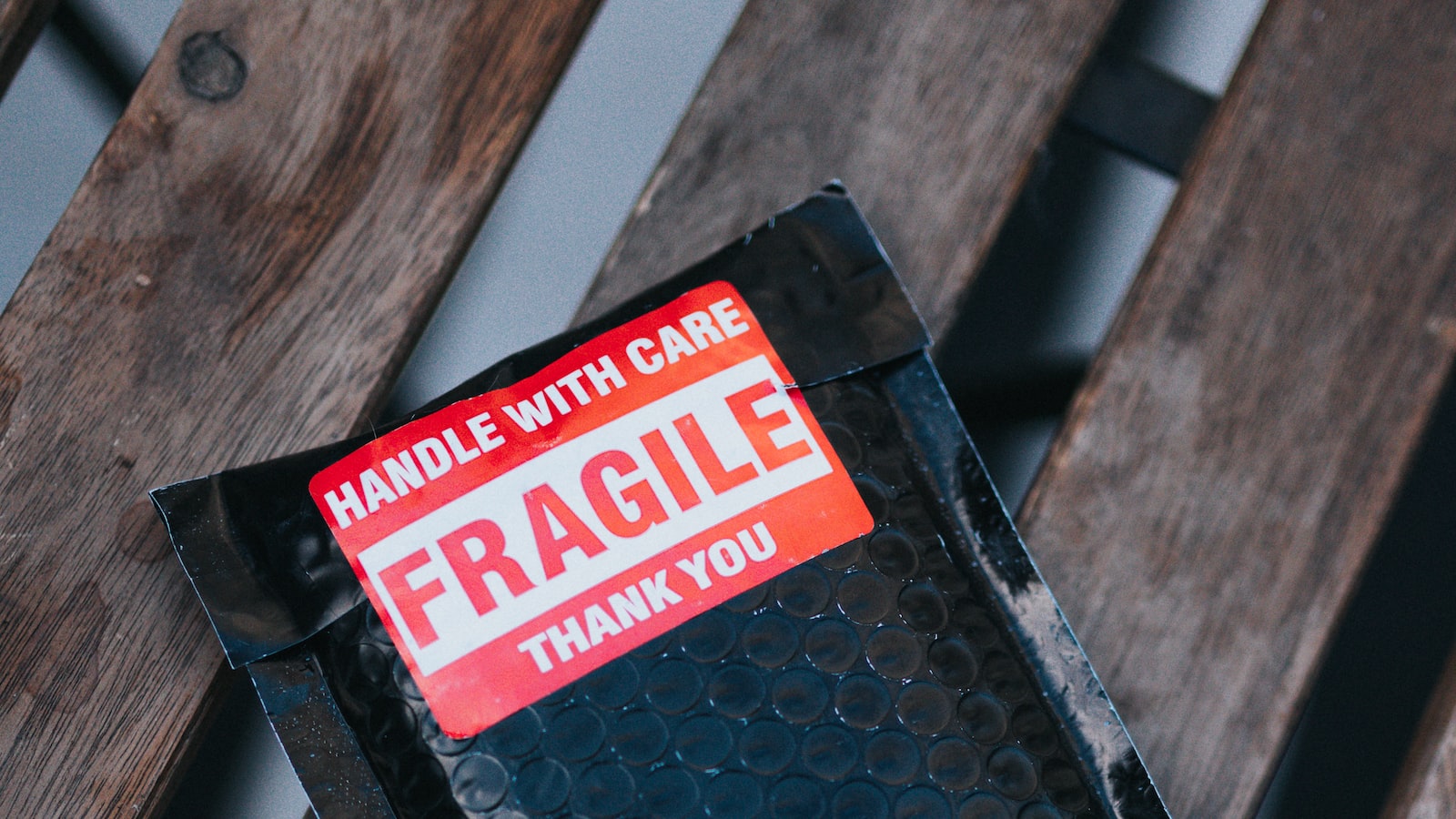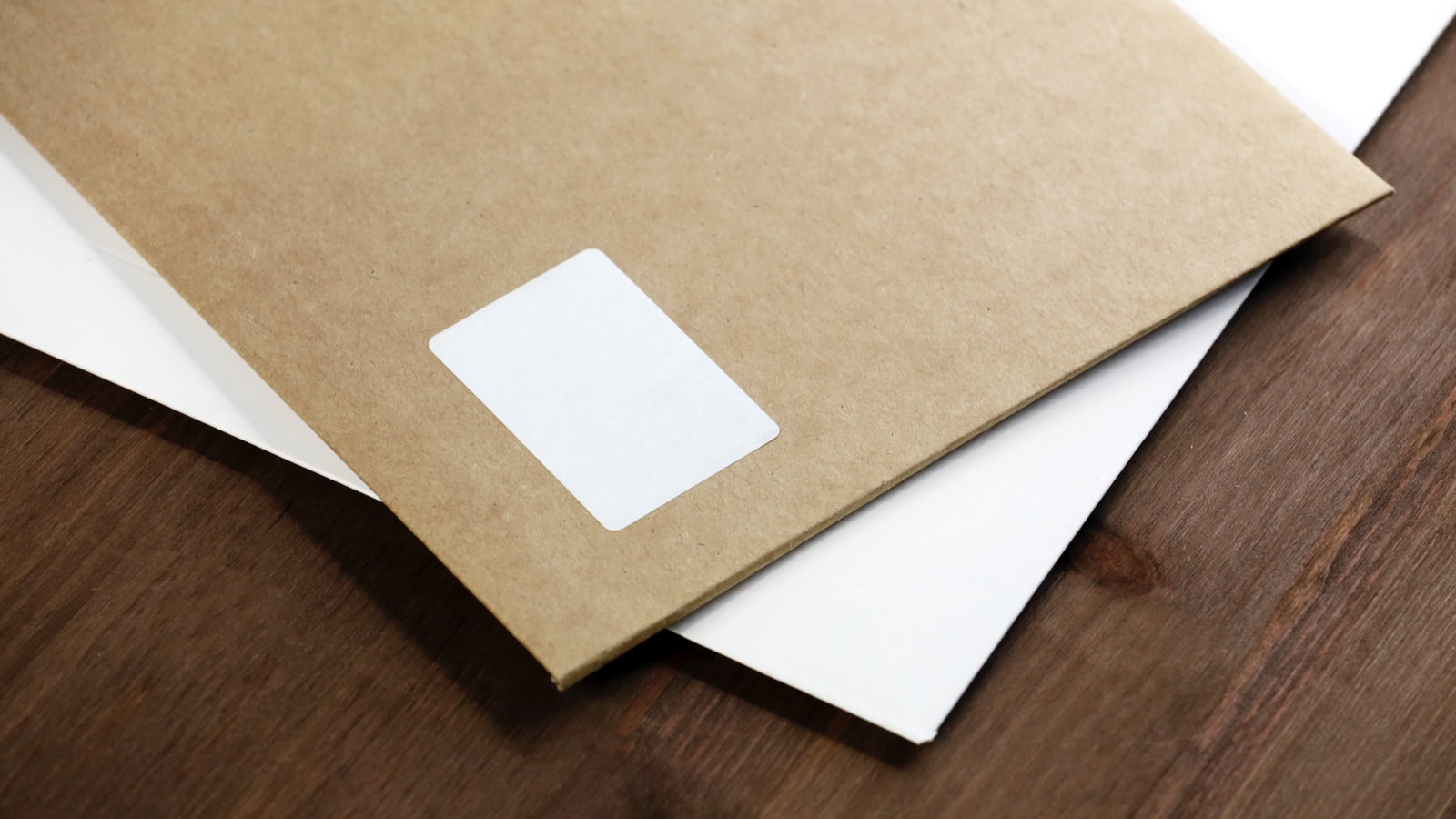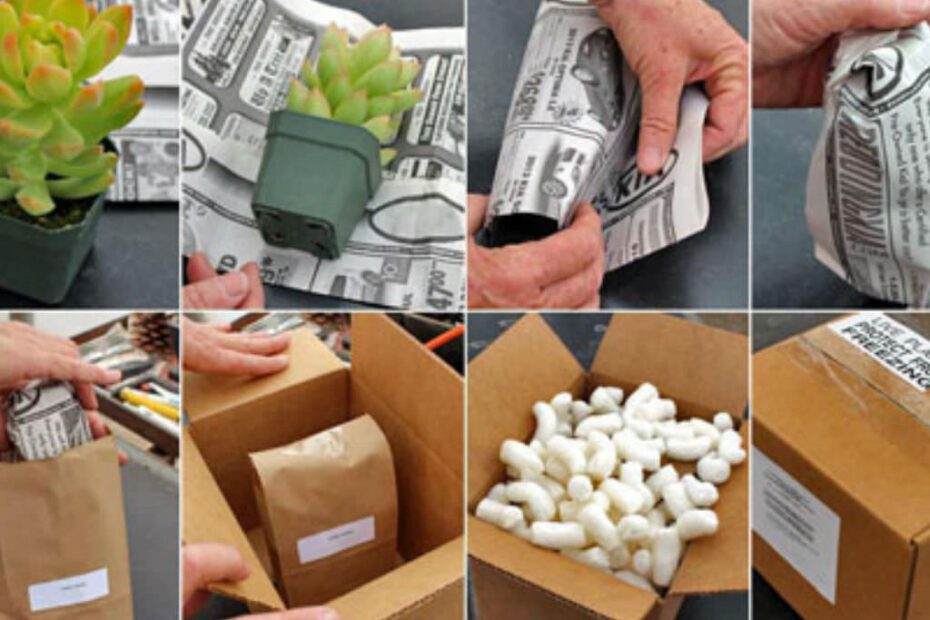Unveiling the hidden secrets of shipping greenery across distances, we embark on a delicate journey to reveal the enchanting world of succulents. Nurtured by the hands of passionate gardeners, these whimsical plants have captured the hearts of green enthusiasts far and wide. The time has come, fellow plant lovers, to demystify the art of shipping these botanical wonders, ensuring their safe passage to new homes. With an amalgamation of careful tips, trusted techniques, and a sprinkle of creativity, we delve into the realm of succulent shipping, unraveling the secrets to preserve their charm, vitality, and vibrant colors during their majestic voyage. So, let’s unbox the wisdom, for in this eloquent guide lies your compass to safely navigate the vast seas of succulent shipment, and infuse joy into the hearts of both sender and receiver.
Packaging Materials for Shipping Succulent Plants
When it comes to shipping succulent plants, choosing the right packaging materials is crucial to ensure their safe arrival at their destination. Packaging materials play a vital role in protecting these delicate plants from damage during transit. Here are some tips and features to consider when selecting :
-
Boxes: Use sturdy, corrugated boxes that are of an appropriate size for your succulent plants. Opt for boxes with double-wall construction, as they provide extra protection against crushing or puncture. Consider placing the pot in a separate plastic container before placing it inside the box to prevent leakage and soil spillage.
-
Cushioning: Provide ample cushioning to protect the plants from impact. Use biodegradable packing peanuts, bubble wrap, or crumpled newspaper to create a protective layer around the succulent. This cushioning material will help absorb any shocks or vibrations during transit.
-
Inner Wrapping: Wrap the pot of the succulent in tissue paper or bubble wrap individually to provide an additional layer of protection. Secure the wrapping with tape to prevent it from coming loose during transit.
-
Labelling: Clearly label the box as “Fragile” or “Live Plants” to ensure careful handling. Add instructions such as “This Side Up” to indicate the correct orientation for the package.
-
Documentation: Include a care guide or instructions for the recipient, highlighting the best practices for unpacking and caring for the succulent plant upon arrival. This information will help the recipient ensure the plant’s continued health and longevity.
By following these packaging tips and features, you can ship your succulent plants with confidence and increase the chances of their safe arrival. Remember to handle the package with care and choose a shipping service that offers reliable tracking and insurance options to provide further peace of mind.

Considerations for Protecting Succulents During Shipping
When it comes to shipping succulent plants, special considerations need to be taken to ensure their safe arrival and to prevent any damage during transportation. Here are some key factors to keep in mind when preparing to ship your beloved succulents:
Proper Packaging
- Use sturdy cardboard boxes that fit the size of your succulents, ensuring they have enough space to breathe.
- Wrap each succulent in newspaper or tissue paper to protect delicate leaves and prevent soil from spilling.
- Secure the plants in place within the box by using bubble wrap or packing peanuts to prevent any movement during transit.
- Add “fragile” labels to the package to alert handlers to exercise caution.
Time the Shipment
- Ship succulents on Mondays or Tuesdays to avoid weekend holds at post offices or sorting facilities, reducing the risk of extended transit times.
- Avoid shipping during extreme weather conditions, especially during periods of hot or cold temperatures, as extreme temperatures can harm succulents.
- Consider using expedited shipping methods to minimize the amount of time the succulents spend in transit.
Table: Shipping Tips
| Feature | Tip |
|---|---|
| Packaging | Use sturdy boxes and secure plants with bubble wrap. |
| Timing | Ship on Mondays or Tuesdays and avoid extreme weather conditions. |
| Labeling | Add “fragile” labels to the package for careful handling. |

Step-by-Step Guide: Shipping Succulent Plants Safely
Shipping succulent plants can be a delicate and nuanced process, but with the right steps and precautions, you can ensure that your precious succulents arrive at their destination healthy and happy. Here is a step-by-step guide on how to ship a succulent plant safely.
Firstly, it is crucial to choose the right packaging materials. Opt for a sturdy cardboard box that is large enough to accommodate the plant and provide room for protective padding. Line the bottom of the box with a layer of crumpled newspaper or bubble wrap to provide extra cushioning during transit. Secure the plant in its pot by carefully wrapping it with newspaper or tissue paper and use tape to hold it in place. For added protection, place the potted plant inside a plastic bag to prevent soil spillage.
Next, it’s essential to protect the succulent’s delicate leaves from damage. Gently wrap each individual leaf with tissue paper or bubble wrap, securing it with tape. If there are any fragile or overhanging parts, such as blossoms or branches, consider using cotton wool or tissue paper to support and safeguard them. Place the wrapped succulent into the box, making sure it remains upright but not tightly squeezed. Fill any empty spaces in the box with additional padding, such as shredded paper or Styrofoam peanuts, to prevent movement during transit and provide an extra layer of protection. Print and include care instructions for the recipient, so they can keep their succulent thriving after delivery.
In the table below, you’ll find some helpful features and tips to consider when shipping succulent plants:
| Features/Tips | Description |
|---|---|
| Temperature | Avoid shipping during extreme weather conditions such as extreme heat or cold. Temperature fluctuations can stress or damage the succulent. |
| Time of shipping | Aim to ship your succulent plants early in the week to minimize the chance of them sitting in a warehouse over the weekend. This reduces the risk of prolonged exposure to unfavorable conditions. |
| Fragile labeling | Clearly label your package as “Fragile” to ensure careful handling during transit. |
Proper packaging and handling are key to successfully shipping succulent plants. By following these steps and tips, you can send your beloved plants to their new homes securely, allowing them to continue thriving and bringing joy to their new owners.
Expert Tips for Ensuring Succulent Survival During Shipping
When it comes to shipping succulent plants, it’s essential to take some extra precautions to ensure their survival throughout the journey. To help you navigate this task successfully, we’ve gathered expert tips to guide you. These invaluable pointers will not only protect your beloved succulents but also provide you with peace of mind. Let’s dive in!
1. Packaging: The first step in shipping succulents is to carefully package them to prevent any damage. Use sturdy cardboard boxes with ample room for cushioning materials. Secure the plant in place with tissue paper or bubble wrap, ensuring it stays upright to avoid any casualties during its travels. Label the package as fragile to alert the shipping carrier about its delicate contents.
2. Soil Moisture: Succulents have unique watering needs, and striking the right balance is crucial during shipping. It’s best to slightly dry out the soil before packing the plant to prevent excessive moisture and potential rotting. However, include a small moisture source like a damp paper towel or moss to maintain the necessary hydration during transit. This will ensure your succulent stays healthy and hydrated until it reaches its destination.
| Features | Tips |
|---|---|
| Fragile | Label package accordingly to alert carriers. |
| Cushioning Materials | Use tissue paper or bubble wrap to secure the plant. |
| Soil Moisture | Slightly dry out soil but include a moisture source. |
Frequently Asked Questions
Q: How can I send my succulent on a journey without wilting away?
A: Fear not, fellow plant enthusiasts! To ensure your beloved succulent arrives in tiptop condition, follow these steps. First, find a sturdy box that’s just the right size. Q: Should I wrap my succulent in a cozy blanket for its journey?
A: While your good intentions may be to snuggle your succulent, resist the urge to wrap it in a blanket. Instead, gently surround it with packing peanuts or crumpled newspaper to provide some cushioning. Q: Is there a secret trick to keeping my succulent hydrated during shipping?
A: Ah, the hydration dilemma! Before sending your succulent on its way, make sure the soil is slightly moist but not soaked. Then, wrap the pot with a plastic bag to retain moisture without turning it into a swamp. Remember, happy shipping leads to happy succulents! As we bid farewell to our succulent-loving readers, we hope that our guide on how to ship a succulent plant has provided you with the rejuvenating burst of knowledge you were seeking. Remember, each step in this process is imbued with a touch of creativity, just like the fascinating world of succulent plants themselves.
Whether you embark on the journey of shipping your precious succulent babies across oceans, or simply intend to send a thoughtful gift to a distant plant enthusiast, these tried-and-true methods will ensure their safe voyage. By carefully selecting the perfect pot, surrounding our leafy friends with cushiony protection, and choosing the most reliable shipping method, these gorgeous plants will soon find themselves nestled in a new home, ready to flourish in unfamiliar terrain.
Oh, the wonders of shipping succulents! It is far from a mundane task; it is an art that requires delicacy, precision, and passion. Just imagine the joy that will ripple through the atmosphere as someone unboxes their carefully sealed package, unveiling a thriving succulent that has travelled miles to bring them a touch of green solace. With each successful journey, these resilient beings defy distance and bring a piece of nature’s grace to different corners of our wide and wondrous world.
So, dear readers, may this guide empower you to embark on your own succulent-shipping escapades, fueling your botanical endeavors and fostering connections that transcend boundaries. As you send your precious succulents on their way, we encourage you to revel in the beauty of this intercontinental exchange and the shared appreciation for the wonders of flora. Remember, it is not merely a plant in transit; it is a living testament to our innate desire to foster growth, share joy, and nurture the world around us.
With that, we bid you adieu, dear succulent enthusiasts. May the winds be gentle, the packaging be secure, and the green wonders of your life continue to thrive, even in the face of vast distances. Happy shipping, and may your succulent endeavors forever bloom!
- When to Put Weed and Feed on Lawn in Michigan - October 16, 2023
- When to Fertilize Potatoes Plants - October 16, 2023
- Can You Plant Clover in the Spring - October 16, 2023
Contents
- 1 Packaging Materials for Shipping Succulent Plants
- 2 Considerations for Protecting Succulents During Shipping
- 3 Proper Packaging
- 4 Time the Shipment
- 5 Table: Shipping Tips
- 6 Step-by-Step Guide: Shipping Succulent Plants Safely
- 7 Expert Tips for Ensuring Succulent Survival During Shipping
- 8 Frequently Asked Questions

